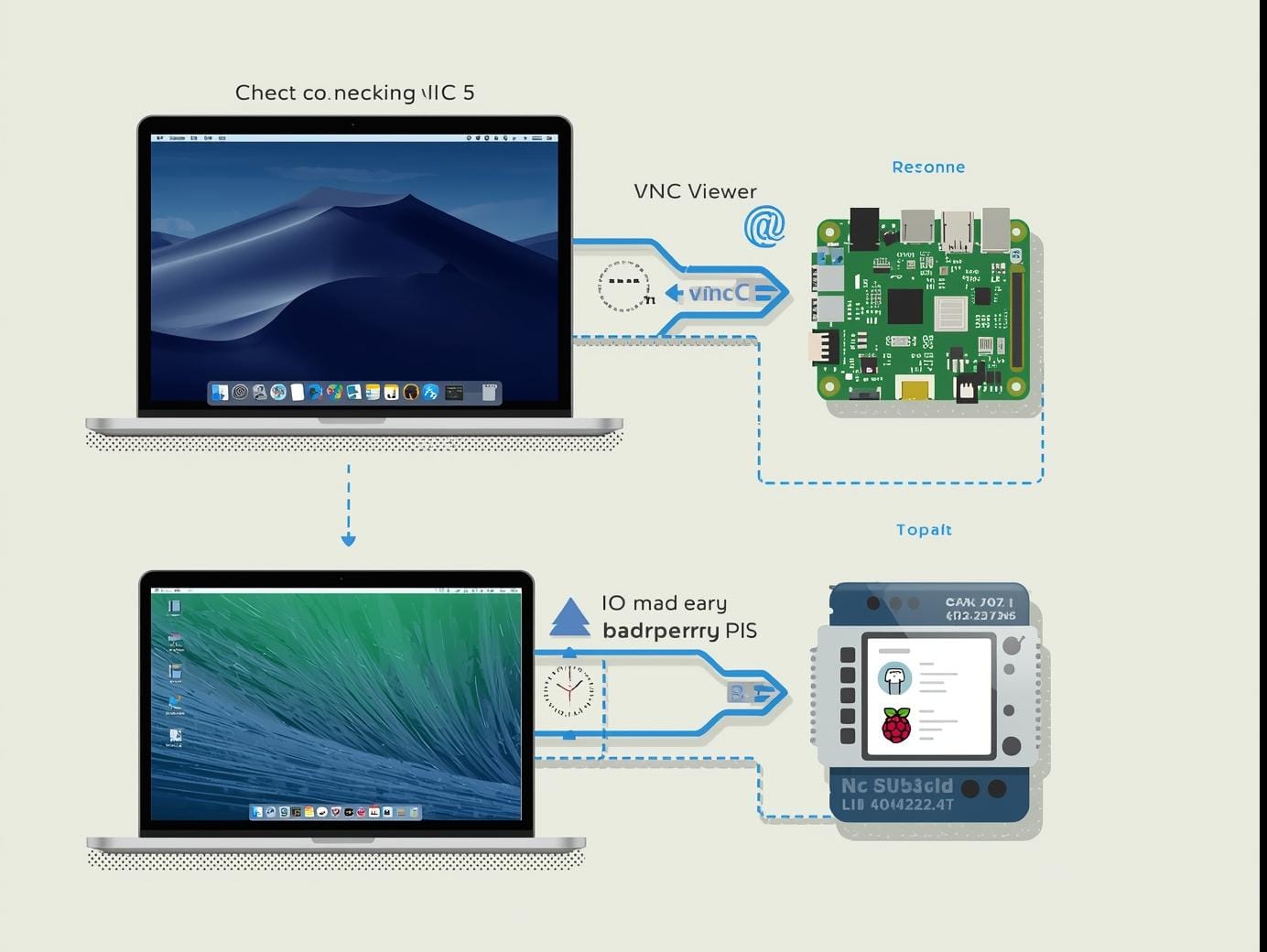You bought a Raspberry Pi 5. You did not buy another monitor.
Why? Because you’re smart, cheap, or both. Now you want to VNC into it from your Mac.
Here’s the story. Short like Hemingway. Funny like Baratunde.
Step 1 – Turn on SSH
The Pi is shy. Give it a voice:
sudo raspi-config
Enable Interfacing Options → SSH. Now you can whisper commands from your Mac.
Step 2 – Install VNC
The Pi needs VNC glasses. Without them, it’s blind.
sudo apt update
sudo apt install realvnc-vnc-server realvnc-vnc-viewer -y
Step 3 – Enable VNC
Still blind. Time to put the glasses on.
sudo raspi-config
Enable Interfacing Options → VNC.
Step 4 – Create a Virtual Monitor
Without HDMI, your Pi sulks like a teenager.
We’ll give it an imaginary friend: a fake monitor.
sudo nano /etc/X11/xorg.conf.d/20-virtual.conf
Paste this in:
# Virtual display using Xorg dummy driver
Section "Device"
Identifier "virtual"
Driver "modesetting"
Option "IgnoreEDID" "true"
EndSection
Section "Monitor"
Identifier "virtual-monitor"
HorizSync 28.0-80.0
VertRefresh 48.0-75.0
EndSection
Section "Screen"
Identifier "virtual-screen"
Device "virtual"
Monitor "virtual-monitor"
DefaultDepth 24
SubSection "Display"
Depth 24
Modes "1920x1080"
EndSubSection
EndSection
Now your Pi believes it’s got a screen. Imagination is powerful.
Step 5 – Restart the X Server
Check permissions first:
ls -l /dev/tty0
Then CPR for pixels:
sudo systemctl restart display-manager
If still cranky:
sudo service lightdm restart
Step 6 – Auto-Start X Server on Boot
You don’t want to type startx every morning. That’s for peasants.
Edit ~/.bash_profile or ~/.bashrc and add:
# Start X server if on tty1 and no DISPLAY set
if [ -z "$DISPLAY" ] && [ "$(tty)" == "/dev/tty1" ]; then
startx
fi
Now your Pi wakes up ready to party.
Step 7 – Connect from macOS
On your Mac:
- Press
Cmd + Kin Finder. - Enter:
(or use the Pi’s IP).vnc://raspberrypi.local - Log in with your Pi username + password.
You’re in. The Pi obeys. You rule.
Troubleshooting
Virtual Display Issues
Logs don’t lie:
cat /var/log/Xorg.1.log
cat ~/.local/share/xorg/Xorg.0.log
TTY0 Permission Issues
ls -l /dev/tty0
sudo systemctl restart display-manager
X Server Issues
If it’s extra grumpy:
sudo systemctl restart display-manager.service
Done
No extra monitor. No drama. Just VNC magic.
Your Raspberry Pi 5 now thinks it’s a desktop, but you know the truth.
Headless. Lean. Mean. SaaS machine.




